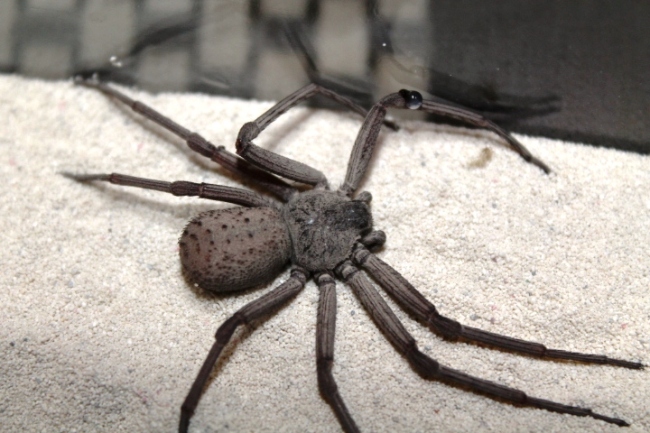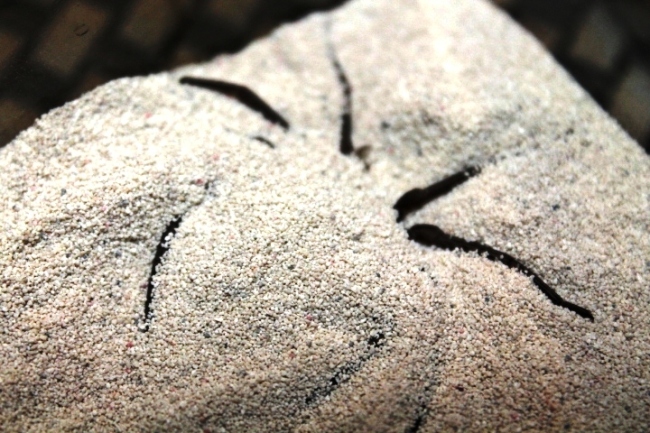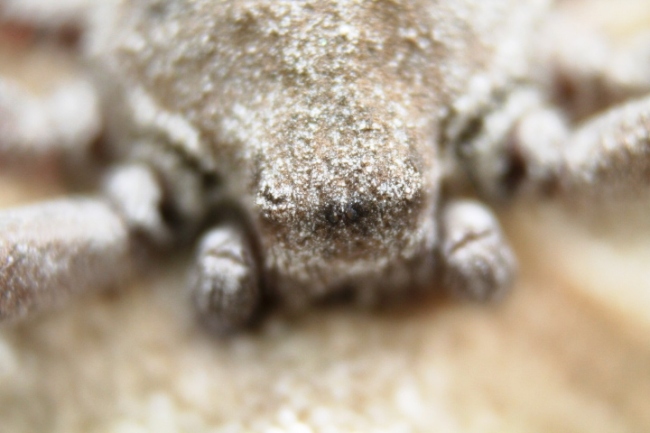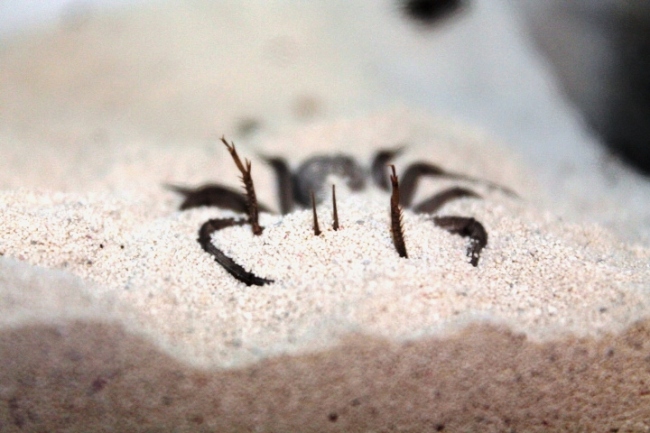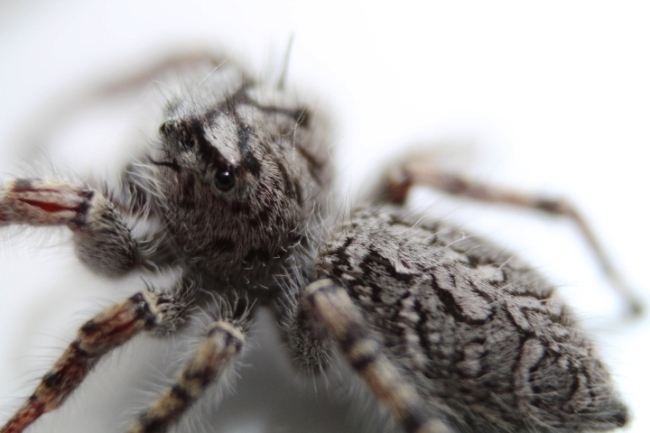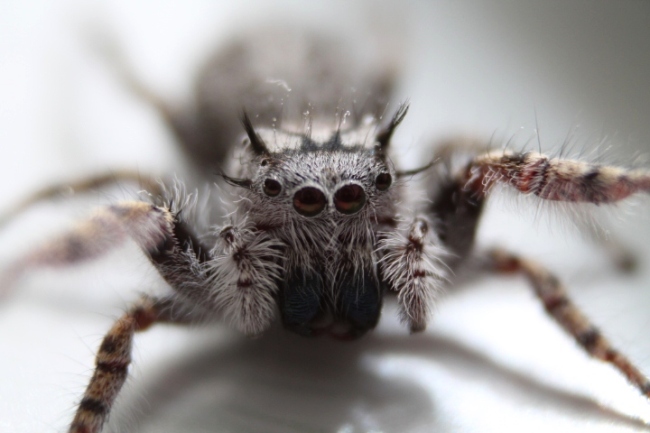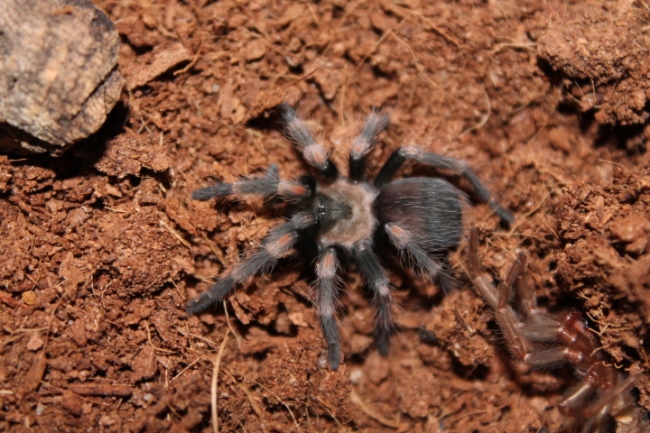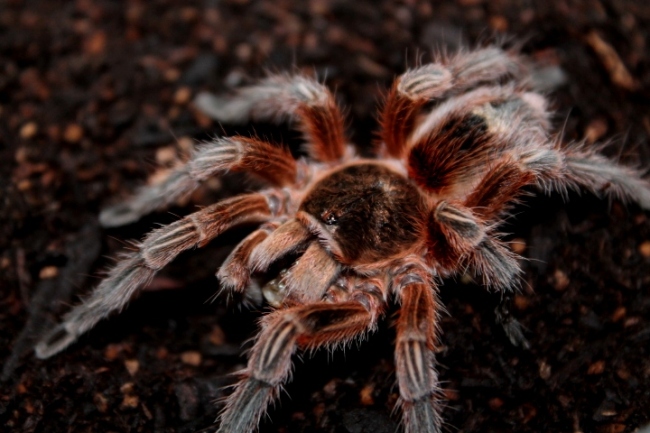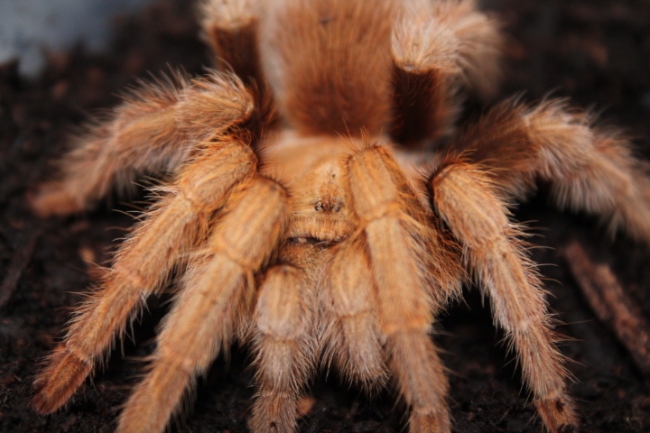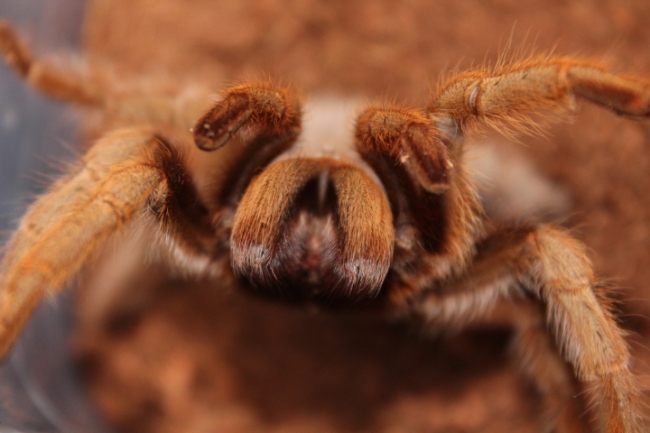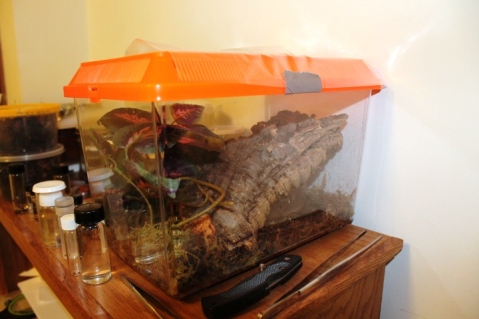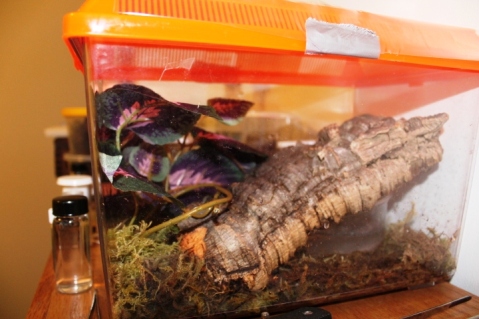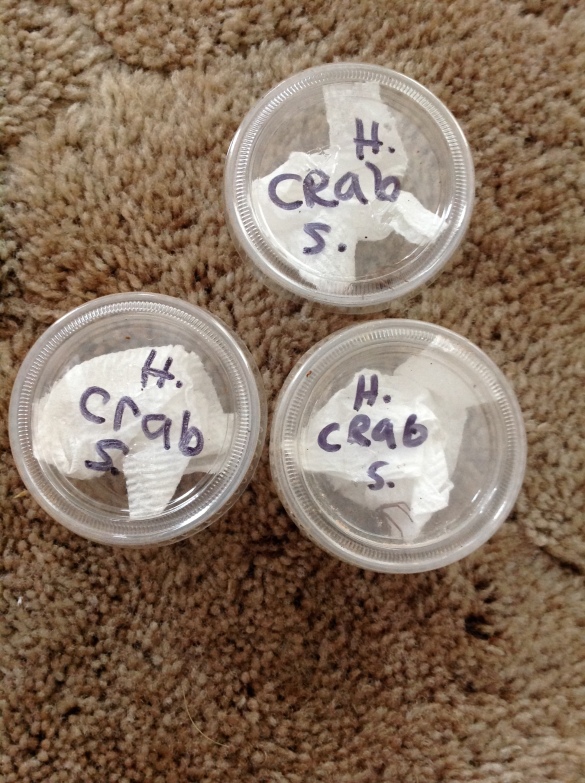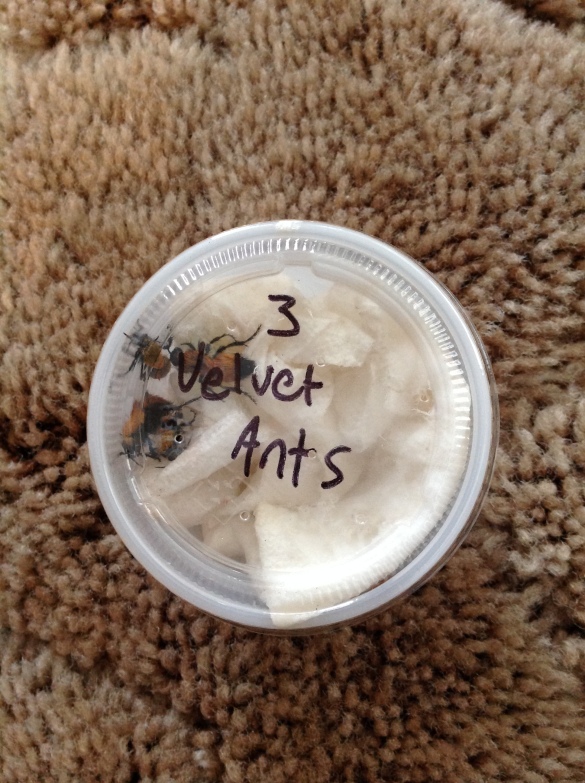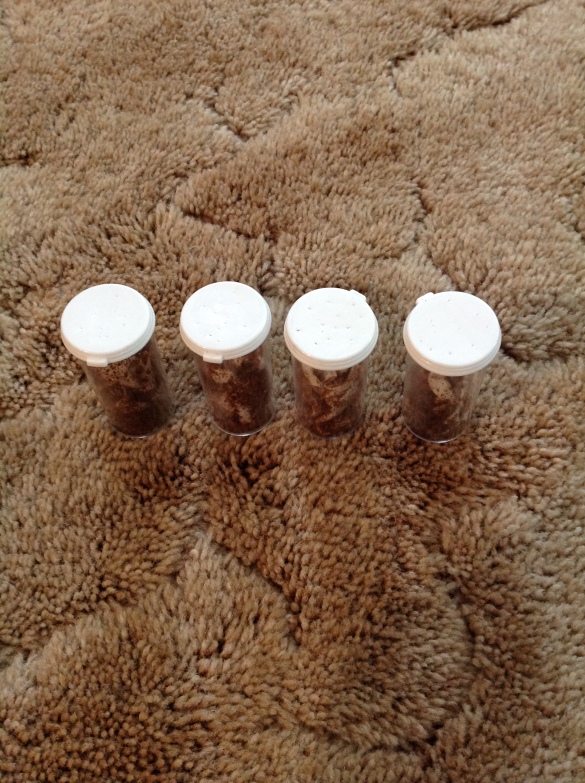Sands of Death
A couple months ago, I got some new spiders. This spider is well known on YouTube for its digging, but not seen too often in the US invert hobby. These had been on my wish list for the longest time, but I couldn’t find any (or at least any offered for a decent price). I finally got lucky and managed to find three for sale. My overall goal was to get them to breed, but that’s proving to be rather difficult since I have three females.
The sand spider (Sicarius spp.), is a very reclusive spider, hailing from deserts in South America and Southern Africa. Reclusive is an accurate term, not only for their behavior of always staying hidden, but also because they are in the same family as the brown recluse (Loxoceles reclusa). Toxicology studies have shown that Sicarius have venom very similar to that of Loxoceles, so necrotic arachnidism (necrosis due to arachnid bite) is a distinct possibility. However, Sicarius are non-aggressive, almost to a fault, rarely biting or showing any aggression. They are much more likely to go running off than they are to bite.
The enclosure for Sicarius is simple. They can’t climb, so a plastic enclosure works just fine. Care must be taken though, because if the walls get dusty, the spiders can get a grip and climb. I just have a Kritter Keeper full of sand with a piece of cork bark leaning up against the side. I spray a small amount of water into a corner once a month and feeding occurs every two weeks. So far two of the females have been entertaining to watch feed (picture an eight-legged landmine), but the other one has been pretty conserved, only coming to feed after I’ve turned out the lights and gone to bed.
Overall, these are great spiders to keep. Once you get past the wicked speed and potential to be highly venomous, they are very good pets with a very unique set of adaptations.
As a final note, this is not a spider that I would recommend to the beginning hobbyist. You can blink and this spider will be on the other side of the enclosure. The redeeming qualities are that it can’t climb and is non-aggressive. Aggressiveness varies between individuals though, so if you do get a Sicarius (or really any other pet: dog, cat, bird, spider, scorpion, etc.), treat it with respect and don’t put yourself in a risky situation.
An 8-legged Update
Sorry for the delay in posting! Things got busy and I lost track of time.
As an update, there have been a few arrivals and a few losses. Such is the life of someone who keeps invertebrates as pets. I have been taking lots of pictures with the T3 and learning what it takes to capture great images, so I’ll share a few here.
RIP Snow
And Midnight
But there is always more space for invert pets! A local pet store recently got a new shipment of tarantulas and some of them are very difficult to get, including Oligoxystre diamentinensis! Even though it’s only about half an inch long, it’s already turning blue! A very exciting thing to see, but not what I picked up (not yet anyway…). Instead, I got a Chilean copper (Paraphysa scrofa) and Arizona blonde (Aphonopelma chalcodes or Aphonopelma paysoni, depending on region).
The P. scrofa is a gentle species that maxes out at around 4 inches (10 cm). Very pretty tarantula that may be worth breeding in the future!
And of all the species to give me a threat display, I got it from this guy! Normally a very calm species, but I guess this one wasn’t in the mood!
Finally, I got around to splitting up the black hole spiderlings (Kukulcania hibernalis). The mother had given me a sac at the end of last year that hatched and produced over 60 slings! I didn’t have near enough containers, so I let them cannibalize for a bit. I thought the numbers had gotten below 10, but after rounding all the little ones up, the total was still over 20. A few more than expected, but still more than enough to raise and trade or sell later on!
As a final note, if you want to see more of my pictures, you can check my ArachnoBoards picture thread here.
Mysterious New Addition
This past weekend, the local pet store, Sailfin, had a 25% off sale on reptiles, amphibians, and arachnids. Never one to miss a sale like this, I made my way over there, along with a friend who was also very interested on getting a good deal. We entered the store and made a beeline for the back room where they kept everything not fish related.
My friend and I had actually been in a couple days before that to pick up crickets, but we decided to wait to get those along with whatever new creature(s) that caught our eye. There were no new tarantulas unfortunately, but the ones that were still there were going for such a great price that they were hard to pass up. All of the reptiles and amphibians looked happy and healthy as always, and the warm-blooded fuzzy things on the shelves behind us were active as ever.
One thing I had noticed last time I was there was that one of the tarantulas, a Costa Rican orangemouth (Psalmopoeus reduncas) looked mature, so I made sure to mention that to one of the workers. He had thought that as well, so he went back and got the enclosure so that we could have a closer look. Lifting up the spider’s corkbark caused it to go running everywhere. Let me tell you, I wasn’t expecting it to be that fast (though I guess that gives me something to look forward to when my P. irminia (Venezuelan suntiger) gets older). We were easily able to confirm it was a mature male, it didn’t get out, and the fearful trio waiting in the doorway with dinner plate sized eyes now have a great story to tell their friends.
None of this really tells you what I got though, does it? Well, I’m going to wait for a day or two before I reveal what it is. But here are a couple pictures in get the guesses going!
Feel free to post your guesses in the comments section below, or on the Facebook page here. Happy guessing!
Bugs In Cyberspace Review
Recently I got a package from a very good seller, Peter Clausen, owner of the website, Bugs in Cyberspace. I’ve gotten invertebrates from Peter before and have never been disappointed. I was super excited about this because Peter was going to send me some inverts that had been on my wish list for quite a while. The package was filled to the top with cups and vials holding my now prized inverts, seen below.
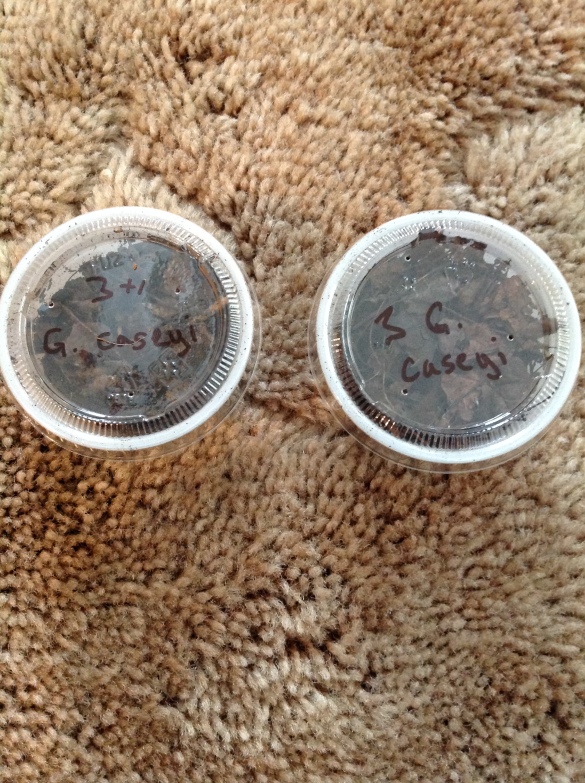
Seven harlequin beetle larvae (Gymnetis caseyi). Adults can be seen here
There were also two warty glowspot roaches (Lucihormetica verrucosa), but I didn’t get pictures. Despite these being sent when it was wickedly cold, all but two things survived. This is a tribute to the amazing packing job that Peter did. He is a credit to the invertebrate hobby and someone that I will continue to do business with in the future. If you want some interesting invertebrate pets, he’s the best person to go to, hands down.
